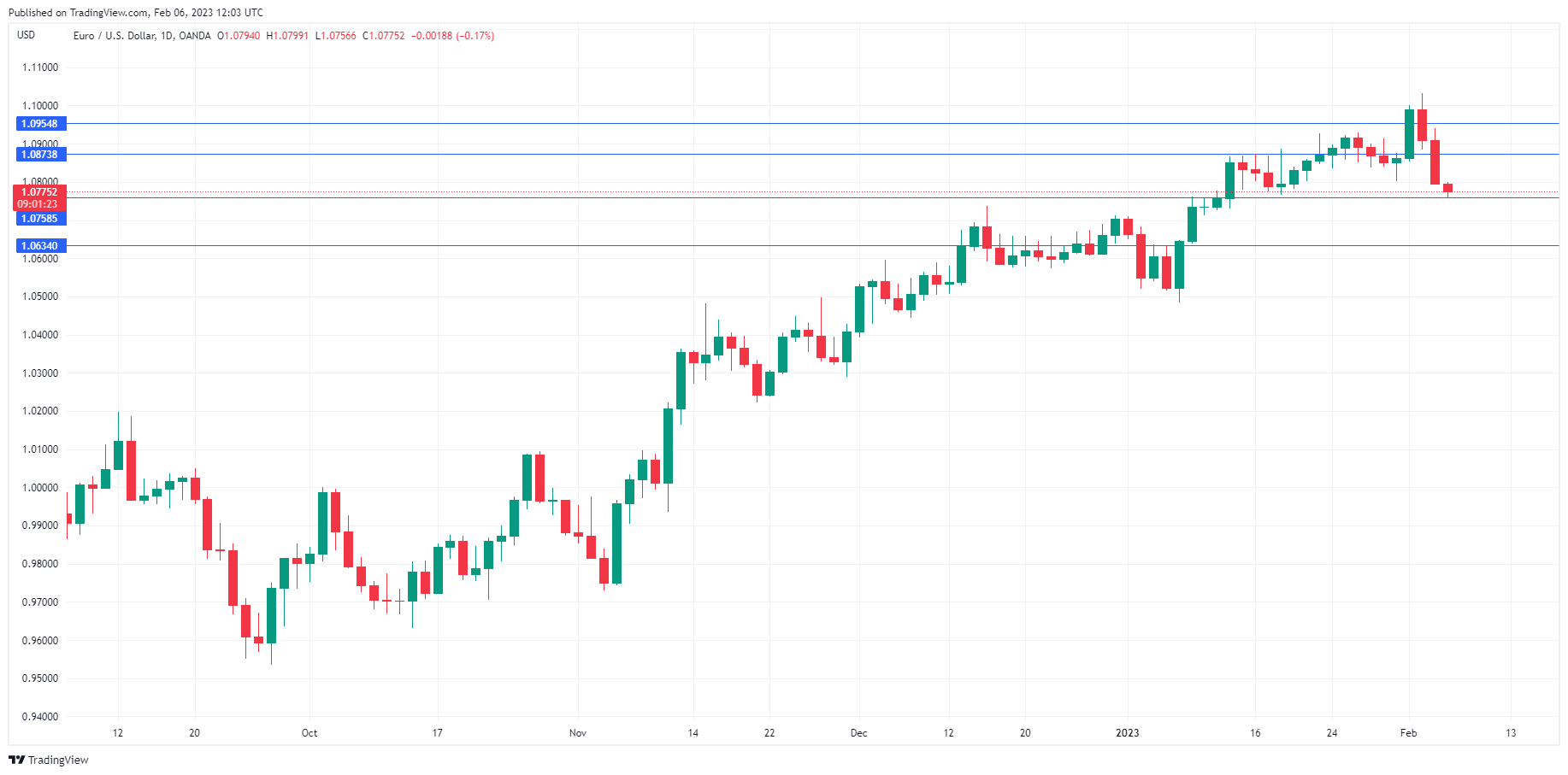The euro continues to lose ground and has started the week in negative territory. In the European session, EUR/USD is trading at 1.0783, down 0.19%. Earlier in the day, the euro has now fallen to its lowest level since Jan. 23.
Euro takes a spill
The euro sent market participants on a roller-coaster ride last week. The Fed’s rate increase pushed the euro higher by 1.16%, but the ECB rate hike and the blowout US nonfarm payroll report sent the euro tumbling close to 2%.
The January US nonfarm payrolls was an absolute blowout that surprised everybody. The economy created 517,000 new jobs, crushing the estimate of 185,000 and well above the December gain of 260,000. The unemployment rate fell from 3.5% to 3.4%, its lowest rate since 1969.
The US dollar surged against most of the major currencies after the employment report and the euro fell by 1%. There has been talk that the Fed might deliver a “one and done” rate hike in March which would end the current rate-hike cycle, even though Jerome Powell said at last week’s FOMC meeting that two more rate hikes were likely. After the massive gain in nonfarm payrolls, the “one and done” proponents will be lying low.
How will the Fed react to the job data? The labour market, which has shown remarkable resilience to the Fed’s steep rate-tightening cycle, is much too strong for the Fed’s liking, as a weaker labour market is needed for inflation to continue falling. Fed member Mary Daly called the employment release a “wow number” and said that the Fed’s December forecast of a peak rate of 5.1% was a “good indicator” of Fed policy. With the benchmark rate currently at 4.5%-4.75%, we’re likely looking at two more rate hikes, exactly what Jerome Powell said at the FOMC meeting last week. Since the employment report, the markets have become less dovish and have priced in an increase in May.
Eurozone data was a mixed bag today. German factory orders bounced back in December with a gain of 3.2% m/m, after a 4.4% decline in November. The estimate stood at 2.0%. Eurozone Sentix Investor Confidence improved to -8.0, up from -17.5 points. However, eurozone retail sales slid 2.7% m/m in January, down from a 1.2% gain in December and worse than the consensus of -2.5%.
.
EUR/USD Technical
- 1.0758 is a weak support line, followed by 1.0633
- There is resistance at 1.0873 and 1.0954
Content is for general information purposes only. It is not investment advice or a solution to buy or sell securities. Opinions are the authors; not necessarily that of OANDA Business Information & Services, Inc. or any of its affiliates, subsidiaries, officers or directors. If you would like to reproduce or redistribute any of the content found on MarketPulse, an award winning forex, commodities and global indices analysis and news site service produced by OANDA Business Information & Services, Inc., please access the RSS feed or contact us at info@marketpulse.com. Visit https://www.marketpulse.com/ to find out more about the beat of the global markets. © 2023 OANDA Business Information & Services Inc.



